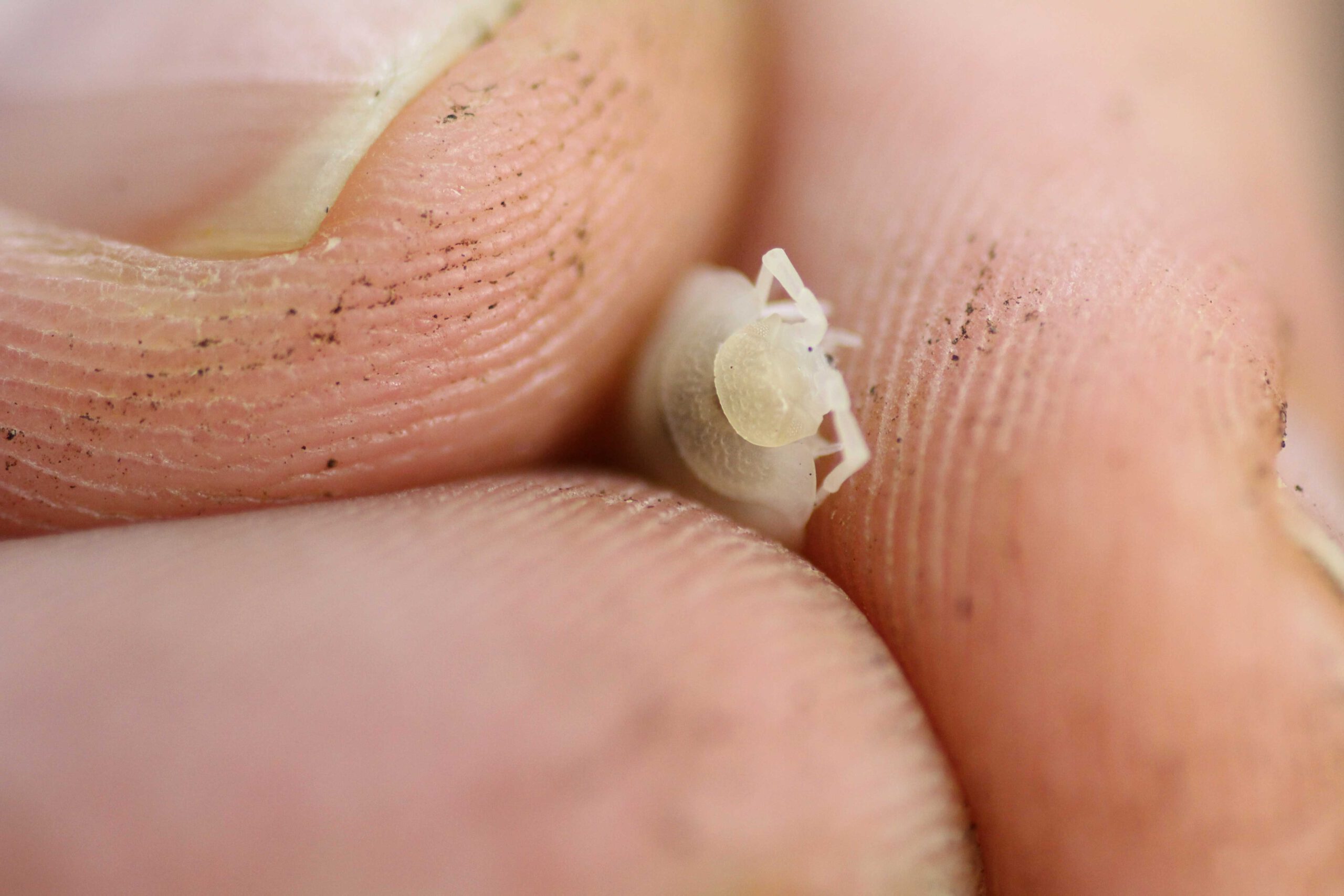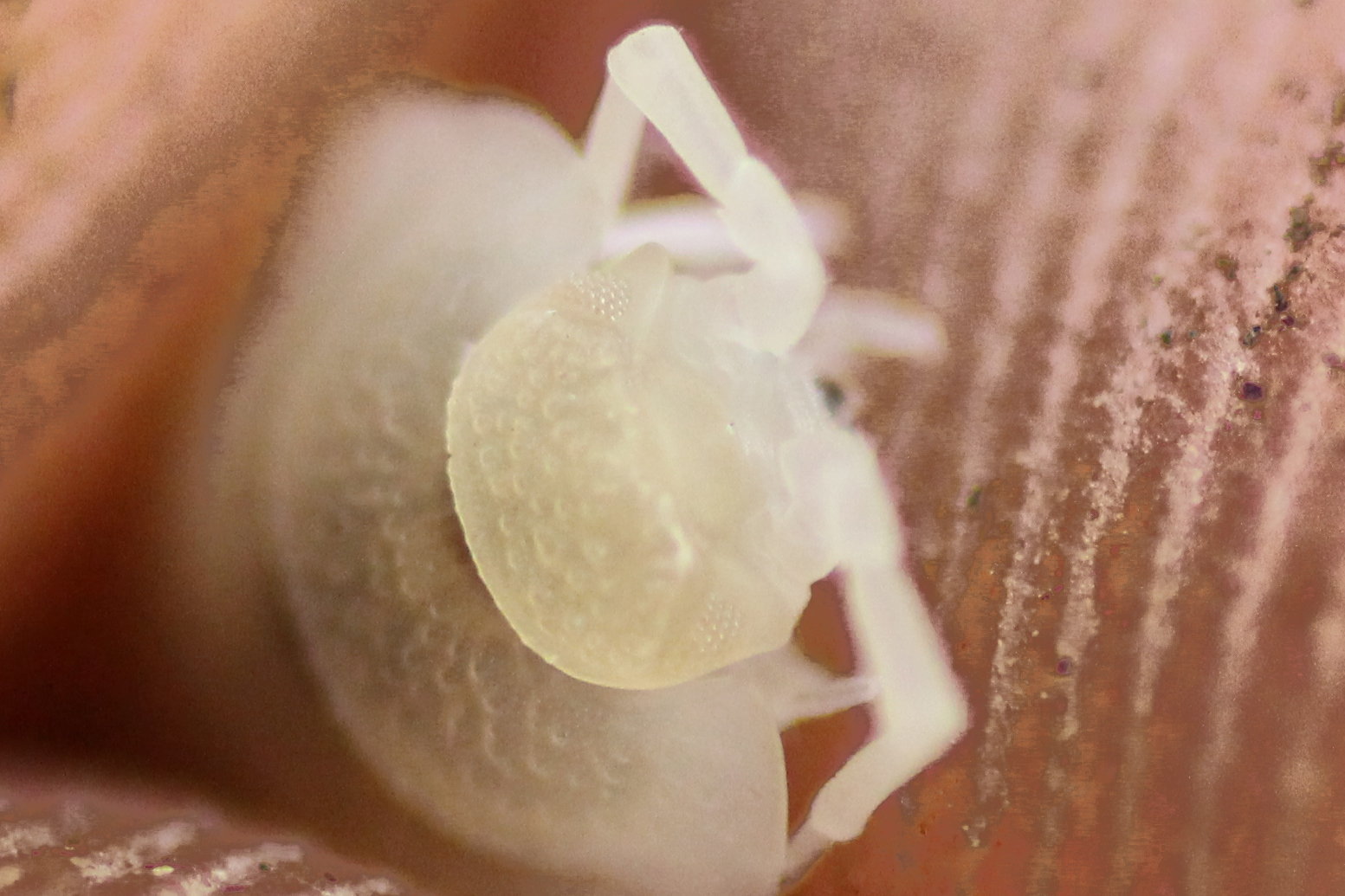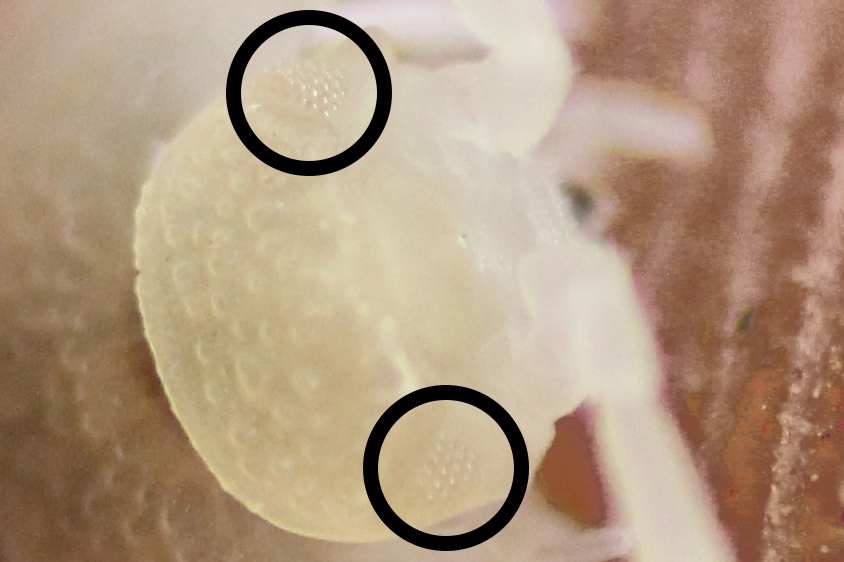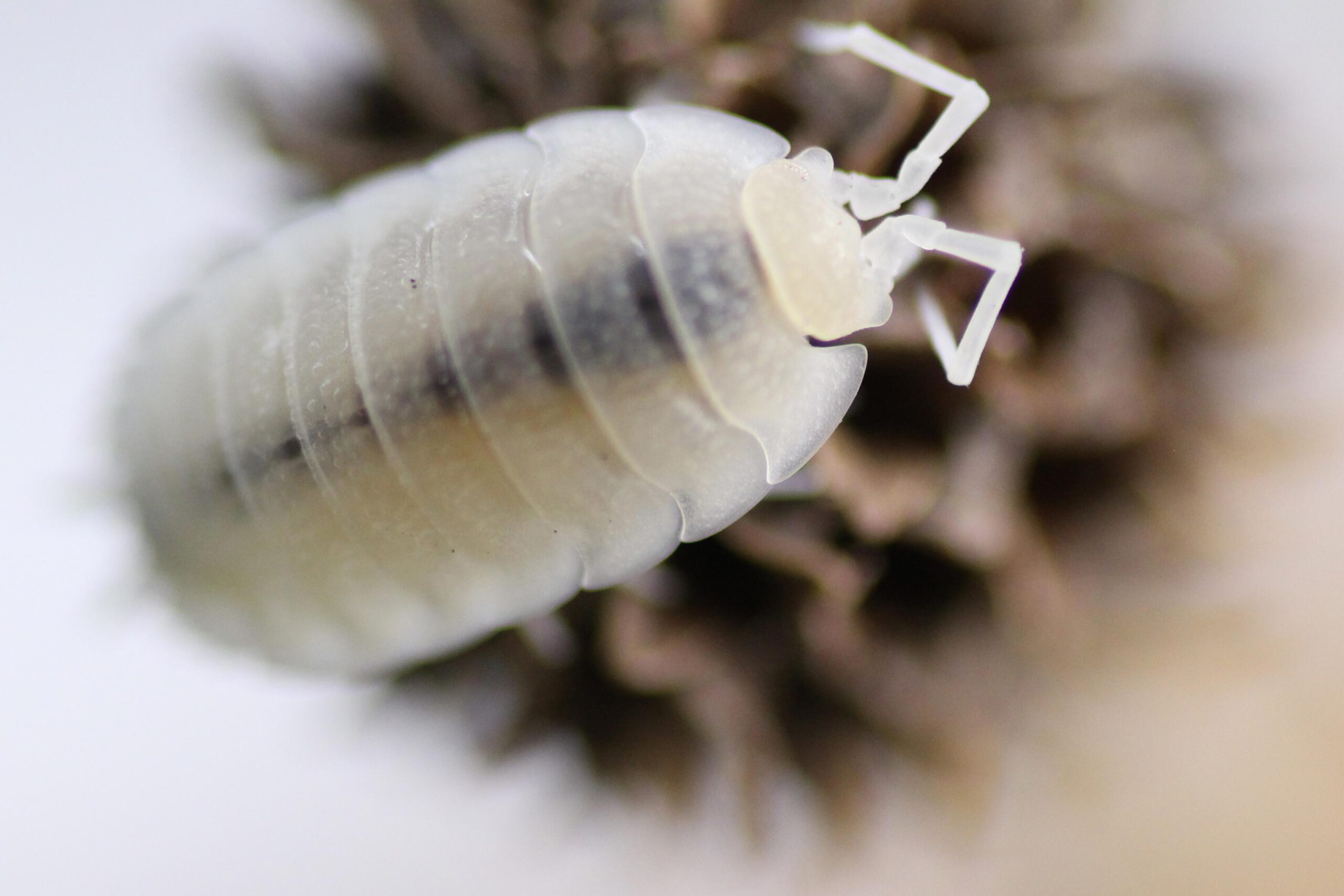Breeding-Magazine
The secret of the isopods without eyes
In my new YouTube video “Unboxing Terraristika Hamm | Asseln ohne Augen?” you could marvel at my newest color morph. Of course I wanted to get a closer look at it.
All those who haven’t seen the video yet can do it here.
I traded them because the previous owner had problems breeding these morphs. She told me that she sometimes transfers the color variant from the normal breeding box into a separate box. Unfortunately she had no breeding success in the box in which there was only this color morph. At first sight you can’t see any eyes on this isopod. That’s why I was quite curious, if this will also be true with a macro shot and if I can see more with my old eyes.
Since Porcellio scaber are generally very hectic contemporaries and are very difficult to photograph with a macro lens, Stefan held the assel and I was able to focus him calmly the lens.



The two facet eyes (complex eyes) are located on the left and right sides of the head. The complex eyes of insects consist of many single eyes, the ommatidia. The more important the sense of sight is, the larger the eyes are and the more ommatidia they possess. Isopods do not see as sharp images as we do, but they can perceive movements much better and react accordingly fast.
After the recording, I knew why I thought there were no eyes at first. They are completely white and therefore almost invisible. However, white eyes do not mean that the animals do not produce melanin. Otherwise the eyes of the woodlouse would be red, because one perceives the red blood vessels due to a missing pigmentation.
It is therefore much more likely that this color morph can only produce white melanin and this is also reflected in the white eyes. After that I searched the internet for such mutations and found an interesting article about Thomas Hunt Morgan.
He experimented with Drosophilas in his “fly room” for years. Drosophilas are very suitable for genetic research because they are easy to breed and the sequence of generations is very entertaining.
Back to Thomas Hunt Morgan – One day the lucky one discovered a sensation in one of his many breeding approaches: A Drosophila with white eyes! That was something very special, because Drosophilas normally have red eyes.
He tried to breed out this mutation and found out that the mutation always occurred only in male flies, never in female flies. After further investigations it turned out that the gene of the eye colour is located on both sex chromosomes of the fruit fly. This means that the white eye colour is directly linked to the sex of the animals, in this case the male animals. Thomas Hunt Morgan was therefore the first person to be able to assign a gene to a specific chromosome. He was awarded the Nobel Prize for this in 1933.
Congratulations afterwards from me.
(Source: books.google.com)
If this could also be transferred to isopods, I would know why the previous owner had problems with the breeding. With exclusively male animals even the best husbandry conditions do not lead to breeding success
.
However, one must not forget that Thomas Hunt Morgan worked with wild coloured animals with white eyes and not with completely white animals as in our case. Therefore the tension remains high whether the isopods are male animals or not. If this should be the case, I would have to place wild-colored female Porcellio scaber into the group and cross the offspring again with each other, so that this kind of Morph does not die out. Since my “Asselbude” is an hour’s drive away from where I live and I am very busy after work, I have to wait until the weekend.
If you don’t want to miss my next blog article, just register here.
You want to know how it goes on?
View part 2:




